In the second of a two-part post, learn how the Western Conference grew to its current size of 15 teams. Through expansion, league merger, and relocation, the conference moved from establishing roots in non-traditional hockey markets like California to having teams in the desert. Learn the story behind each franchise.
Central Division
Chicago Blackhawks
- Began play in 1926
- Original-Six franchise
- The Blackhawks were started by a group of Boston investors, including football player Huntington Hardwick, when the NHL awarded them an expansion franchise in 1926. Less than a month later, the team was sold to Frederic McLaughlin, a World War I veteran. McLaughlin was in the 86th Infantry Division, nicknamed the “Blackhawk Division,” in honor of Chief Black Hawk of the Sauk Nation. Thus came the inspiration for the team’s name. The Blackhawks became the first NHL team to ice an all-American lineup during the 1936-37 season.
- The Blackhawks have won six Stanley Cups in their history, including three in the past decade. What is forgotten is that there was a 49-year Cup drought between 1961 and 2010 despite the team making the playoffs in all but 10 seasons, including five Final appearances.
Related: Chicago Blackhawks Logo History
Colorado Avalanche
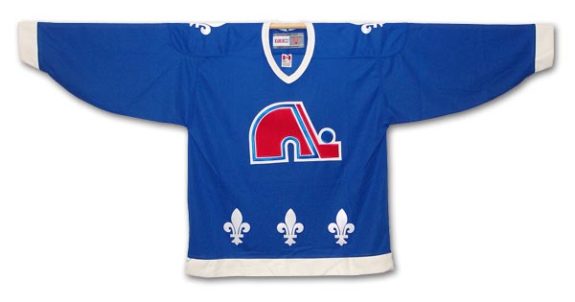
- Began play in 1972 as the Quebec Nordiques of the WHA
- Joined the NHL in 1979
- Relocated to Colorado in 1995
- The team that ultimately relocated to Colorado, the Quebec Nordiques, was not initially intended to play in Canada. Although an original member of the WHA, the Nordiques were supposed to play in San Francisco as the Sharks. However, as financial issues arose, the league awarded the team to a group of investors in Quebec City. Translated as “the Northerners,” the Nordiques were the second-most northern WHA franchise after the Alberta Oilers. The Nordiques began play with the legendary Maurice “Rocket” Richard behind the bench, although he stepped down after two games. By the end of the 1970s, the Nordiques were one of WHA four teams that merged into the NHL.
- The Nordiques struggled financially, largely the result of playing in the smallest NHL market. Following the 1994 lockout, the results of which proved difficult for small market teams, led to the team being sold to an ownership group in Colorado. Initially the team was supposed to be called the Rocky Mountain eXtreme, but backlash resulted in choosing “Colorado Avalanche” instead. The Avalanche were set up well from the start with Joe Sakic, Peter Forsberg, and Adam Foote on the roster. A trade during the 1995-96 season to acquire Patrick Roy pushed the team over the edge and they won a Stanley Cup in their first season. They added a second Cup in 2001.
Dallas Stars
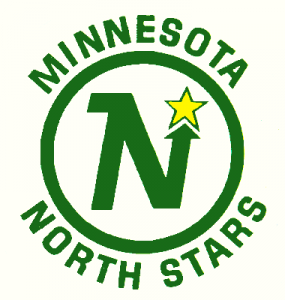
- Began play in 1967 as the Minnesota North Stars
- Relocated to Dallas in 1993
- The North Stars entered the league as a part of the 1967 expansion when the league doubled from six to 12 teams. Initially the team was a success, reaching the playoffs five of its first six seasons. However, financial issues and not playing in downtown Minneapolis led to struggles during the 1970s. In 1978, the team was sold to the owners of the Cleveland Barons (formerly the California Golden Seals) and the teams merged into each other but remained in Minnesota. They remained that way until the early 1990s when poor attendance led to owners seeking relocation. Unsuccessful bids to move to California, both San Francisco and Anaheim, allowed Dallas to become an option. Upon convincing by Dallas Cowboys star Roger Staubach that the city was suitable, the team relocated for the 1993 season.
- After moving to Dallas, the Stars had great success, qualifying for the playoffs their first two seasons. They reached their peak at the end of the decade, reaching at least the Conference Final in three straight seasons, winning a Stanley Cup in 1999.
Minnesota Wild
- Began play in 2000
- Following a promise by the league to bring a franchise back to the “State of Hockey” after the North Stars’ relocation, the promise was fulfilled. In 1997, the NHL awarded an expansion franchise to Bob Naegele, Jr. to begin play in 2000. The name “Wild” was chosen among six other finalists, including Blue Ox, Freeze, and Northern Lights. The Wild were an immediate success and have remained such, with just one season of average attendance below 18,000 in their 18 years.
- The Wild have yet to win a Stanley Cup and have no Final appearances in their history but have reached the playoffs each of the past five seasons.
Related: Minnesota Wild: A Brief History
Nashville Predators
- Began play in 1998
- Discussions for an NHL team in Music City started in 1995 when the Devils were considering relocation due to issues with funding a new arena. These rumors were present even as the Devils won the 1995 Stanley Cup, when commissioner Gary Bettman addressed them during the Final. The city of Nashville wanted a franchise enough that it offered to pay a $20-million bonus to any team relocating there. Although the Devils worked out a deal to remain in New Jersey, Bettman recognized Nashville’s efforts to attract a team and rewarded them with an expansion franchise in 1997.
- The group that won the bid was led by current Wild owner Craig Leipold. The team had a logo chosen before a team name, using a saber-tooth image that reflected the skeletal remains found in the city in 1971. Leipold put the team up for sale in the mid-2000s, citing financial loss as his reasoning. Leipold sold the Predators to a group of local investors in 2007.
- Since then, the team has made the playoffs in all but three seasons, including a Stanley Cup Final appearance in 2017. The city has also developed into one of the most exciting markets in the league, earning the nickname “Smashville.”
St. Louis Blues
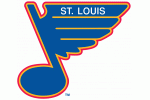
- Began play in 1967
- St. Louis was awarded one of six teams in the 1967 expansion despite not having a potential owner in place or even having submitted a formal bid. The city was chosen for its location and due to the influence of the Wirtz family, owners of the Blackhawks. They also owned St. Louis Arena and wanted to sell it, thus convincing the league to expand to St. Louis. A group led by Sid Salomon Jr. and his son paid the expansion fee in addition to purchasing the arena and paying to renovate and expand it. They were named the Blues as a result of the W.C. Handy song, “St. Louis Blues.”
- The Blues were successful from the start, reaching three consecutive Stanley Cup Finals, losing all three. They finally broke through and one their first Stanley Cup in 2019, defeating the Boston Bruins in seven games.
Winnipeg Jets
- Began play in 1999 as the Atlanta Thrashers
- Relocated to Winnipeg in 2011
- The NHL’s history in Winnipeg dates back to 1979 when the WHA’s Jets merged into the NHL. That version of the Jets relocated to Arizona, where they remain today. The current Jets got their start as the Atlanta Thrashers, an expansion franchise that began play in 1999. The Thrashers were doomed from the start with low attendance and poor finances. It didn’t help that they qualified for the playoffs just once in 12 seasons. In May 2011, the team was sold to True North Sports & Entertainment of Winnipeg and they relocated to begin play that fall.
- Fans were so excited for the return of an NHL franchise that 13,000 season tickets were sold in 17 minutes. For the first two seasons, the Jets assumed Atlanta’s position in the Eastern Conference but switched to the Western Conference for the 2013-14 season. Since relocation, the Jets have made the playoffs twice in seven seasons, giving the franchise three appearances in 18 seasons.
Related – Atlanta Thrashers Hockey: Oh, What Could Have Been
Pacific Division
Anaheim Ducks
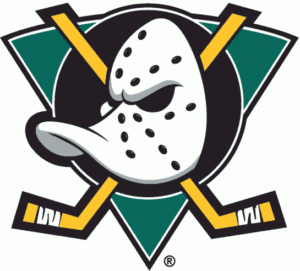
- Began play in 1993
- The Mighty Ducks of Anaheim, as they were known from 1993 to 2006, began as an expansion franchise in 1993. The area was awarded a franchise in 1992 after The Walt Disney Company submitted a bid. The name came from the Walt Disney movie, The Mighty Ducks, and the team’s first logo was similar to the one used in the film. In their first draft, Anaheim used the fourth overall pick on future Hall-of-Famer Paul Kariya, who anchored the team for the first nine seasons. The Mighty Ducks era came to an end in 2006 after Disney sold the team, which has been known as the Anaheim Ducks since.
- The first three seasons were tough but the Ducks qualified for the playoffs in their fourth season. In 2003, with Mike Babcock behind the bench, the Ducks reached the Cup Final, losing to New Jersey in seven games. They returned to the Final in 2007, defeating the Senators in five games.
Arizona Coyotes
- Began play in 1972 as the Winnipeg Jets of the WHA
- Merged with the NHL in 1979
- Relocated in 1996 and became the Phoenix Coyotes
- Became the Arizona Coyotes in 2014
- Although the Coyotes have only been in Arizona since 1996, the franchise dates back 45 years with the original Winnipeg Jets. The Jets were one of the founding franchises of the WHA and merged with the NHL in 1979. The Jets faced financial issues with increasing player salaries following the 1994-95 lockout. They also played in the league’s smallest market after the Nordiques relocated to Colorado. In December 1995, a plan to move the team was approved by the league.
- The Coyotes got off to a great start in Arizona, making the playoffs each of their first five seasons. They were led by prominent goal scorers Keith Tkachuk and Jeremy Roenick, and the success of those teams lasted until the early 2000s. However, from 2002 to 2017, the Coyotes reached the postseason just three times, most recently in 2012.
Calgary Flames
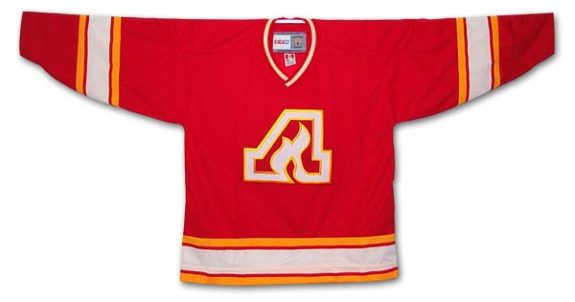
- Began play in 1972 as the Atlanta Flames
- Relocated to Calgary in 1980
- The Flames entered the league in 1972 in Atlanta as part of the NHL’s pushback against the WHA. They joined along with the Islanders and were the NHL’s first attempt at hockey in the south. They were named the Flames after General Sherman’s “March to the Sea” during the Civil War, when Atlanta was almost entirely lost to fire. Although successful on the ice, the Flames struggled to breakthrough financially. By the end of the decade, the team was sold to a group from Calgary despite efforts to keep the team in Atlanta. Upon moving to Calgary, the team was an instant success, making the playoffs every year from 1981 to 1991.
- Their success hit its peak in 1989 when they won the Stanley Cup by beating the Canadiens in six games. Since then, they have returned to the Cup Final once, in 2004, when they lost to the Lightning in seven games.
Edmonton Oilers
- Began play in 1972 in the WHA as the Alberta Oilers
- Changed location name to Edmonton in 1973
- Joined the NHL in 1979
- The Edmonton Oilers started as the Alberta Oilers and were one of the founding franchises of the WHA. They initially took the Alberta location name because they were supposed to split their home games between Edmonton and Calgary. That plan never came to fruition and after the first season they became the Edmonton Oilers. The name “Oilers” came about because their first owner was also the owner of the Edmonton Oil Kings, a junior hockey franchise at the time. In their seven seasons in the WHA, they made the playoffs in all but two. They reached their height in the league’s final season, 1978-79, Edmonton’s first with Wayne Gretzky, when they reached the championship final and lost to the Winnipeg Jets.
- Following the merge with the NHL, the Oilers became the best team of the 1980s and developed into one of the best dynasties in hockey history. From 1984 to 1990, they won five Stanley Cups, including two instances of consecutive championships.
Los Angeles Kings
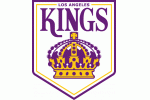
- Began play in 1967
- The Kings entered the NHL as part of the 1967 expansion. Jack Kent Cooke, owner of the Lakers, submitted a bid for a franchise with the promise of building a new arena. That promise was enough to convince the league to award him a franchise. He named them the Kings to give an air of royalty and chose a purple and gold color scheme, both because of the Lakers connection and to further present the image of royalty. The Kings were quite successful from the start, qualifying for the playoffs each of the first two seasons. They had some of their best success in the early 1990s after they acquired Wayne Gretzky in 1988 in the biggest trade in league history. With Gretzky, the Kings reached the Cup Final in 1993 but were ousted by Montreal in five games. That was the last time the Gretzky-led Kings made the playoffs, and he was traded during the 1995-96 season.
- Following the departure of Gretzky, the Kings underwent years of relative mediocrity before they reached the playoffs in 2010 for the first time in six seasons. They reached their height by winning two Stanley Cups in three years (2012 and 2014) to become one of the best teams of the past decade.
Related: History of the Los Angeles Kings
San Jose Sharks
- Began play in 1991
- NHL hockey in Northern California started with the California Golden Seals that were part of the 1967 expansion. That team relocated to Cleveland and eventually merged with the Minnesota North Stars. Efforts to bring hockey back to the area started when the owners of the North Stars, also former owners of the Seals, attempted to relocate the team to San Jose. That plan was shut down by the league but a compromise was agreed upon. The new plan was for the North Stars owners to sell their portion of the team and be the owners of the new San Jose expansion team. The catch was that San Jose could take a number of players from Minnesota in exchange for the North Stars participating in the expansion draft.
- The team sought fan input for the team name and they went with “Sharks” to reflect on the large number of them in the North Pacific. They played their first three seasons in San Francisco before an arena was built and they relocated to San Jose in 1994. Although the Sharks got off to a terrible start, winning just 28 games in their first two seasons, they have missed the playoffs just twice in the past 19 seasons.
Related – San Jose Sharks: A Brief History
Vancouver Canucks
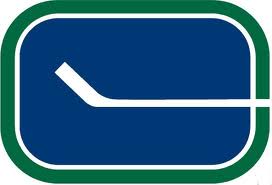
- Began play in 1970
- The Vancouver Canucks’ team name dates back to 1945, when they played in the Pacific Coast Hockey Association, a minor professional league. That team lasted until 1952, when they joined the Western Hockey League. Efforts to bring an NHL team to Vancouver started with the 1967 expansion when the bid was rejected. They also appeared to be a landing spot for the Golden Seals when they moved. After the Seals relocated to Cleveland, the league promised to give Vancouver a franchise in the next expansion. That expansion occurred in 1970 and the NHL Canucks bought the WHL Canucks and took their team name.
- It took four seasons for the Canucks to qualify for the playoffs. In 1982, they made a surprising run to the Stanley Cup Final despite a losing record. They have since reached two additional Finals, in 1994 and 2011, losing both series.
Vegas Golden Knights
- Began play in 2017
- Prior to the Golden Knights, the NHL had a relationship with the city of Las Vegas despite no team. Starting in 2009, the annual awards ceremony has been held there. The city was also home to the Las Vegas Wranglers, an ECHL franchise, from 2003 to 2014. In 2014, rumors arose that the league was considering its first expansion since 2000 and that Vegas was a major candidate. In December of that year, the league allowed bid front-runner, Bill Foley, to lead a season-ticket drive. In June 2015, the NHL officially opened up expansion bids and Las Vegas was awarded a franchise one year later. After paying the expansion fee, the Golden Knights became the first major professional team to call Las Vegas home.
- Since the expansion draft, when Vegas was able to put together the best roster by an expansion franchise in history, the Golden Knights have excelled. They had a true ‘Cinderella’ run in their inaugural season, making it to the Stanley Cup Final – unprecedented for an expansion club.
Enjoy more great hockey history and ‘Best of’ posts in the THW Archives